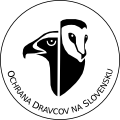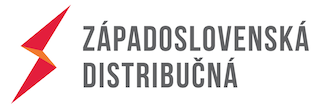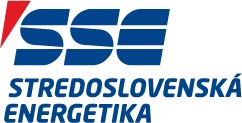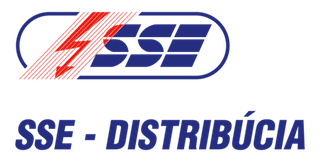Časopis bude dostupný na https://sciendo.com/journal/SRJ
Na stiahnutie:
Pokyny pre autorov - Author guidelines
Raptor Journal EndNote Style.ens
Instructions for authors
The Raptor Journal (formerly known as Slovak Raptor Journal) is an open-access journal indexed in the Scopus database from 2019. The journal has no article publication charge and publishes blind peer-reviewed articles on all aspects of the biology, ecology and ethology of raptors and owls, e.g., original studies, reviews, short notes and other papers related to the main journal scope (e.g., project reports, reports from raptor working groups, bibliographies, etc.). The manuscripts are accepted for consideration if neither the article nor any part of its essential substance (e.g., tables and/or figures) has been or will be published or submitted elsewhere before appearing in the Raptor Journal. Raptor Journal is usually published once a year, with the exception of special issues. Single articles are published Ahead of Print (known also as ‘early bird’ or ‘online first’) as soon as they are accepted and prepared for publication.
General guidelines for manuscripts
Manuscripts should be prepared using a proportional font such as Times New Roman in 12-point size. There is no space limit for manuscript submissions; however, manuscripts longer than 12,000 words will be first discussed by the editorial board. In the manuscript must be identified the person responsible for manuscript negotiations (the corresponding author). Main Document of an original studies is as follows: (1) Title page, (2) Abstract and Keywords, (3) Author’s name(s) and Address(es), (4) Acknowledgments, (5) Introduction, (4) Materials and Methods, (6) Results, (6) Discussion, (7) References, (8) Appendix (9) Online Supplementary Materials, (10) Figure legends and table captions. The Tables and Illustration files should be prepared separately from the Main Document file. Short notes (usually) should not be longer than four A4 pages, excluding a list of references. The short notes should be divided as original study. Use metric units throughout the manuscript.
One copy of the manuscript must be submitted electronically in the English language in Word (preferred), Writer of PDF format. Manuscripts should be sent to:
The entire document should be 1.5 lines-spaced and must contain page and line numbering to facilitate the review process. The text should be structured in the chapters as follows:
TITLE
The title should be concise, omitting implicit terms and, where possible, be a statement of the main result or conclusion presented in the manuscript. Abbreviations should be avoided within the title.
ABSTRACT
No longer than 300 words, entirely without references. The abstract will also be published in Slovak. For not Slovakian-speaking authors, the Raptor Journal will provide the Slovak translation.
KEYWORDS
All article types require a minimum of five and a maximum of eight keywords. Keywords should not contain expressions already used in the paper title.
AUTHOR’S NAME(S) AND ADDRESS(ES)
All names are listed together and separated by commas. Provide exact and correct author names in the required order.
Below, provide the authors’ affiliations (marked by numbering in the superscript). Provide the following information in a given order: organization, address, city (with zip code) and country.
Provide the contact email address behind the name of the corresponding author.
If authors use ORCID ID, provide them in a separate section for each author (ORCID – author name: ORCID NUMBER; author name 2: ORCID NUMBER; etc.).
ACKNOWLEDGEMENT
It should be a short text to acknowledge the contributions of specific colleagues, institutions or grants that allowed or financially supported the presented study.
INTRODUCTION
This section should provide enough background information to make it clear why the study was undertaken and should clearly describe the objectives of the study. Lengthy literature reviews are discouraged. The aims/hypotheses of the study should be presented in the last paragraph.Succinct, with no subheadings.
MATERIAL AND METHODS
This section includes the Study area and may be divided by subheadings and should contain sufficient details so that when read in conjunction with cited references, all procedures can be repeated.
RESULTS
Results should be presented by referring to tables and figures and without discussion. Avoid repeating in the text lists of numerical values that are also presented in tables; however, reference to peak or other noteworthy values is permissible.This section may be divided into subheadings.
DISCUSSION
This section should at least include a concise summary of the principal findings, a discussion of the validity of the observations, a discussion of how the findings relate to other published works dealing with the same subject, and a discussion of the significance of the work. Results and Discussion sections may be in exceptional and justified causes combined as a Results and Discussion section.This section may be divided into subheadings.
REFERENCES
The journal reference style is available for Zotero, Mendeley, Papers and EndNote. Templates are available at: https://www.dravce.sk/web/index.php/sk/pokyny-pre-autorov
In-text citations:
(Krištofík et al. 2009), (Tapfer 1973), (Mebs & Scherzinger 2000), (Haraszthy et al. 1996), (Walker 1996)
Article
Use the full Journal names in the Bibliography section. If available, please always include DOI number of all references.
Krištofík J, Mašán P, Šustek Z & Karaska D 2009: Arthropods in the nests of lesser spotted eagle (Aquila pomarina). Biologia 64(5): 974–980. DOI: 10.2478/s11756-009-0148-x.
Tapfer D 1973: Der Kaiseradler in Pannonien. Der Falke 20: 402–407.
The title of articles not written in English, Deutch, French or Spanish has to be translated into English:
Balát F 1948: Opětné hnízdění orla mořského (Haliaetus albicilla) v Podunají [Repeated breeding of the white-tailed eagle (Haliaetus albicilla) in Danube area]. Sylvia 9–10: 72–73. [In Czech with English summary]
Book
Mebs T & Scherzinger W 2000: Die Eulen Europas. Franckh-Kosmos Verlag Stuttgart
Book chapter / proceedings chapter
Haraszthy L, Bagyura J, Szitta T, Petrovics Z & Viszló L 1996: Biology, status and conservation of the imperial eagle Aquila heliaca in Hungary, 425–428. In: Meyburg B-U & Chancellor RD (eds), Eagle Studies. World Working Group on Birds of Prey Berlin, London & Paris.
E Book / online database / webpage
Johnson A 2000: Abstract Computing Machines. Springer Berlin Heidelberg. Retrieved March 30, 2006, from http://springerlink.com/content/w25154. DOI: 10.1007/b138965.
Walker J 1996: APA-style citations of electronic resources. Retrieved November 21, 2001, from http://www.cas.usf.edu/english/walker/apa.html.
FIGURES AND TABLES
Tables and figures should complement the text and not repeat facts already stated in the manuscript (no duplications). All figures must be submitted separately, with the number written in the name. All images must have a resolution of 300 dpi at the final size. Images may be submitted in black & white mode or colour mode RGB. The TIF/TIFF (.tif/.tiff) and JPEG (.jpg) formats of figures are accepted. Provide all figure captions at the end of the manuscript. The Arabic numbers should be used consecutively in the same order as the figures appear in the text. Abbreviations should be used in the main text and Figure captions (i.e., Fig. 1., Fig. 2., etc.). Use the word “Figure” only to start a sentence. The figure and table captions will also be published in Slovak. For not Slovakian-speaking authors, the Raptor Journal will provide the Slovak translation.
Tables should be inserted at the end of the manuscript in an editable format. Tables should be typed neatly, each in a separate file, with the captions above and, if appropriate, notes below. Captions should be preceded by the appropriate label (e.g., Table 1, Table 2, etc.). The Arabic numbers should be used consecutively in the same order as the tables appear in the text. All abbreviations in figures and tables must be explained in the caption or under the table. Do not use vertical lines. Use horizontal lines above and below the main headings and at the bottom of the table only (not within the table). Use abbreviations (e.g. Tab. 1, Tab. 2) in text.
ABREVIATIONS
Abbreviations of obscure or specialized measurement units, quantity units, chemical names, and other technical terms in the body of the paper should be used only after these have been defined clearly in the place they first appear in the text. However, abbreviations that would
be recognized by scientists outside the author’s field may be used without definition, such as PCR, P, SD, SE, DNA, RNA, The metric system should be used for all measurements, and standard metric abbreviations should, in general, be expressed without periods.
Units of measurement not preceded by a number should not be abbreviated, e.g., “all units are given in millimeters”. There should be a space between a value and its unit, e.g., 20 mM, 42 μl. However, °C and % have no space, e.g., 10°C, 85%. Mathematical symbols such as =, ±, >, <, etc. should be preceded and followed by a space, e.g., “length = 5 mm” rather than “length =5mm”. Abbreviations of genus names should be avoided at their first use for each species both in the Abstract section and its following main text.
APPENDIX AND SUPPLEMENTARY
You can also publish information in an Appendix (published behind References in the article) and/or Supplementary materials (published online on the publisher’s journal web page). In the main text should be used full captions (Appendix/Supplementary).
The supplementary materials can be uploaded as follows:
data sheet (Word, Excel, CSV, PDF or Zip files)
image (CDX, EPS, JPEG, PDF, PNG or TIF/TIFF),
table (Word, Excel, CSV or PDF)
audio (MP3, WAV or WMA)
video (AVI, DIVX, MOV, MP4, MPEG, MPG).
NOMENCLATURE
English bird names should follow the most recent list: http://www.worldbirdnames.org/. All English species’ names should be written in small letters in the manuscript (except for original names, e.g., Tengmalm’s owl, Ural owl, etc.). At the first mention of a species in the text, give both its English and scientific name (scientific name written in brackets). In case both, English and scientific names are written in brackets, separate them by comma eg. (saker falcon, Falco cherrug). When mentioning individual species in the text again, use the English name only. Use the italic font for the scientific names of species.
ETHICS APPROVAL STATEMENT
Authors are responsible that their data, biological material, and methods used in the study were approved (or granted the exemption) by the appropriate institutional and/or national research ethics committee and certify that the study was performed in accordance with their national ethical standards.







